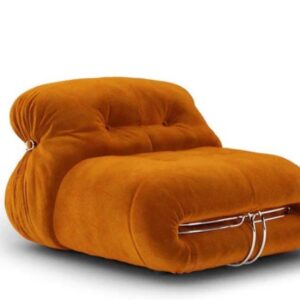When it comes to natural beauty and out-of-door performance, Western Red Cedar stands in a league of its own. Known for its rich sanguine tinges and sweet scent, this wood species has been a builder’s fave for generations. Its straight grain and smooth texture make it a pleasure to work with, whether you’re casting a hedge, sundeck, or out-of-door structure. The featherlight yet durable nature of Western Red Cedar ensures that it performs exceptionally well in varying rainfall conditions. Unlike numerous other softwoods, it contains natural canvases that repel spoilage, decay, and nonentity infestation. This makes it an ideal choice for homeowners seeking fineness and long- term trustability in their construction systems.
The Practical Power of Pressure Treated Lumber for Outdoor Use
For those who prioritize strength and life, Pressure Treated Lumber offers unmatched performance against the rudiments. This timber undergoes a special preservation process that infuses chemicals deep into the wood filaments, guarding it from termites, earth, and humidity damage. It’s a cost-effective result for balconies, walls, and indeed marine operations where humidity is constant. While Western Red Cedar provides natural resistance, Pressure Treated Lumber delivers finagled continuity, making it particularly suitable for high- moisture surroundings or regions prone to decay. Builders frequently prefer it for foundational or structural work, where contact with soil or water is necessary. Its versatility and affordability continue to make it a commanding choice in ultramodern construction.
Comparing Natural Beauty with Engineered Strength
Choosing between Western Red Cedar and Pressure Treated Lumber frequently comes down to aesthetics versus practicality. Western Red Cedar offers a natural warmth and beauty that no artificial treatment can replicate. Its grain patterns and color variations add a touch of fineness to any design. On the other hand, Pressure Treated Lumber provides lesser resistance to environmental stress, taking lower conservation in extreme conditions. While cedar’s natural canvases offer decent protection, pressure- treated wood’s deep chemical infusion ensures longer structural life, especially for ground- contact operations. The decision eventually hinges on whether your design values visual appeal or functional life more.
Sustainability and Environmental Considerations
In the period ofeco-conscious construction, Western Red Cedar stands out as a renewable and sustainable structure material. Gathered from responsibly managed timbers, it’s biodegradable and requires no synthetic treatments. The product process for Western Red Cedar also emits smaller hothouse feasts compared to chemically treated accoutrements . In discrepancy, Pressure Treated Lumber involves chemical preservatives substantially bobby
– grounded composites — that extend its lifetime but can have environmental counteraccusations if not disposed of duly. Still, advancements in ultramodern treatment technology have reduced toxin and bettered environmental safety, allowing Pressure Treated Lumber to remain a feasible and responsible option for out-of-door systems when managed rightly.
ontinuity and conservation Which One Lasts Longer?
Life is a crucial concern for any homeowner investing in out-of-door structures. Pressure Treated Lumber is specifically designed to repel decades of exposure to humidity and pests. It can last up to 40 times when duly sealed and maintained. Western Red Cedar, though naturally durable, generally has a lifetime of around 20 to 25 times in harsh conditions. Regular staining or sealing can extend its life, maintaining its vibrant color and grain. The main difference lies in conservation frequence — Pressure Treated Lumber requires smaller treatments, while Western Red Cedar demands further regular care to save its beauty and adaptability. Both accoutrements can perform exceptionally well when maintained rightly, but their keep conditions differ significantly.
Plasticity and Installation Ease
One of the reasons builders and carpenters love Western Red Cedar is its ease of use. It’s soft, featherlight, and easy to cut, aeroplane, and nail without splitting. This makes it perfect for intricate woodworking systems, siding, or ornamental out-of-door rudiments. In discrepancy, Pressure Treated Lumber can be heavier due to the chemical treatment it undergoes, making it slightly harder to work with. Its thick composition may bear technical tools or pristine- sword fasteners to avoid erosion. still, for large structural operations similar as balconies or retaining walls, Pressure Treated Lumber offers the robustness demanded to handle significant loads. Both forestland serve unique purposes, depending on the skill position of the builder and the design’s design complexity.
Aesthetic Versatility Natural Warmth vs. Utility Functionality
When it comes to visual impact, Western Red Cedar painlessly captures attention with its warm sanguine tones and fine grain. It’s a natural fit for systems where appearance matters just as important as performance — think flies, walls, and siding that need to blend harmoniously with nature. On the other hand, Pressure Treated Lumber has a more muted, greenish shade caused by its treatment chemicals. Though not as visually appealing at first, it can be stained or painted to match any color scheme, offering inflexibility in design. For homeowners who prefer the authentic look of natural wood, Western Red Cedar is hard to beat. For those concentrated on practicality and affordability, Pressure Treated Lumber delivers exceptional functional value.
Cost Comparison Balancing Budget and Quality
Budget frequently dictates the choice between Western Red Cedar and Pressure Treated Lumber. Generally, Pressure Treated Lumber is more affordable, going significantly lower per direct bottom. This makes it a popular choice for large- scale systems similar as balconies, fencing, and framing. Western Red Cedar, while more precious outspoken, provides aesthetic and long- term value that appeals to homeowners seeking decoration results. The original investment in cedar may be advanced, but its dateless beauty and natural resistance to decay can justify the cost. Eventually, the stylish approach is to estimate both short- term and long- term charges — factoring in installation, conservation, and implicit relief costs over the times.
Weather Resistance and Climate Suitability
The performance of Western Red Cedar and Pressure Treated Lumber also depends on your indigenous climate. In dry or relatively sticky climates, Western Red Cedar thrives, maintaining its structure and color with minimum conservation. Its natural canvases make it resistant to light humidity exposure. still, in regions prone to heavy downfall or high moisture, Pressure Treated Lumber has the upper hand. Its chemical protection offers superior defense against water penetration, precluding spoilage and earth growth. For littoral or flood tide-prone areas, Pressure Treated Lumber ensures better life. By matching the wood type to the original climate, you can achieve the stylish balance of performance and appearance for your design.
Stylish operations for Each Material
Understanding where each material excels can simplify your choice. Western Red Cedar shines in operations where aesthetics and artificer take center stage similar as out-of-door cabinetwork, siding, flies, and theater structures. Its natural tones make it perfect for visible areas that enhance your property’s check appeal. Pressure Treated Lumber, on the other hand, is ideal for heavy- duty or structural uses like sundeck architecture, retaining walls, jetties, and posts. Its strength and resistance to ground contact make it necessary for areas that endure constant stress. Some builders indeed combine both accoutrements — using Pressure Treated Lumber for structural architecture and Western Red Cedar for finishing traces to achieve the stylish of both worlds.
conservation Tips for Long- Lasting Performance
To extend the lifetime of Western Red Cedar, regular conservation is crucial. Applying a UV-defensive sealant every couple of times preserves its natural color and prevents riding . Avoid direct ground contact to reduce humidity immersion. For Pressure Treated Lumber, allow the wood to dry fully before staining or sealing, as fresh- treated timber frequently contains redundant humidity. Routine examinations for cracks or slivers insure long- term safety and performance. While Western Red Cedar rewards homeowners with its dateless charm, Pressure Treated Lumber rewards them with continuity and lower keep costs. By following simple conservation routines, both accoutrements can offer decades of reliable service.
Making the Right Choice for Your Next Project
Deciding between Western Red Cedar and Pressure Treated Lumber eventually depends on your priorities.However, environmental sustainability, and fine artificer, If you value natural aesthetics.However, budget effectiveness, and minimum keep, If your design demands maximum continuity. numerous ultramodern builders find that using both strategically yields outstanding results cedar for the visible shells and pressure- treated for structural integrity. Both accoutrements bring commodity special to the table, allowing homeowners to make spaces that balance beauty and abidance. The stylish material is the bone that aligns impeccably with your vision, climate, and life requirements.
Conclusion Partner with Bayou City Lumber for Quality Wood results
When it’s time to bring your vision to life — whether through the natural beauty of Western Red Cedar or the enduring strength of Pressure Treated Lumber — choosing the right supplier makes all the difference. Bayou City Lumber offers decoration- grade timber options that meet the loftiest norms of continuity and design. With times of experience in furnishing quality accoutrements for out-of-door systems, Bayou City Lumber ensures you have access to the perfect wood for your requirements. Whether you’re erecting a cozy vicinity sundeck or a rainfall- resistant hedge, their expert platoon can help you make the ideal selection for lasting satisfaction and dateless artificer.





